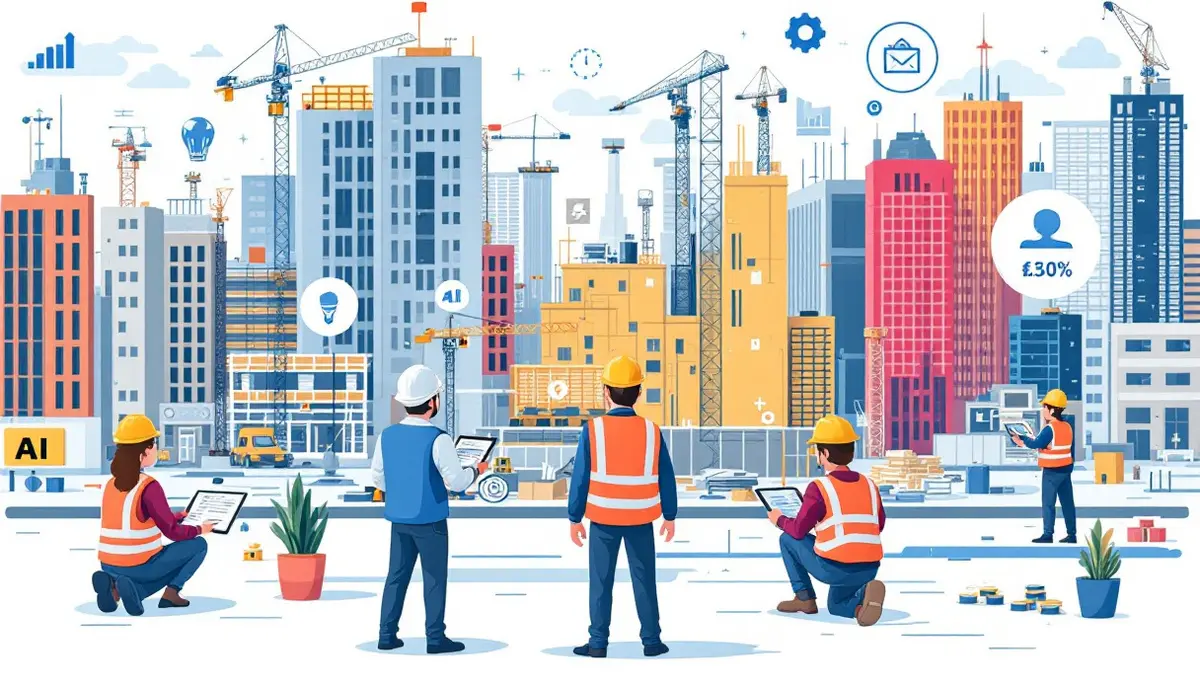
Australian firms grow wary of AI yet boost digital focus
Autodesk's latest State of Design & Make report has indicated a change in attitudes towards artificial intelligence and ongoing concerns around cost and talent challenges among Australian building and construction organisations.
The findings are based on the responses of 460 Australian business leaders from the architecture, engineering, construction and operations (AECO), design and manufacturing (D&M), and media and entertainment (M&E) sectors, drawn from a global pool of 5,600 surveyed leaders.
In the Australian context, high cost of living pressures throughout 2024, exacerbated by high interest rates and inflation, have affected design and make industries significantly. According to the report, 40 per cent of Australian respondents view cost control and cost management as the most significant challenge facing their organisations.
Investment levels have fallen year over year, something the report attributes to high interest rates and a higher cost of borrowing. Despite this trend, 67 per cent of leaders remain optimistic, indicating that their organisations plan to increase future investments.
Andy Cunningham, Senior Regional Director for Australia and New Zealand at Autodesk, commented on the landscape in 2024, saying, "Alongside cost-of-living, artificial intelligence dominated Australia's attention in 2024. However, it appears this fixation has tapered off, following the natural path of tech hype cycles.
And as the report reveals, Australian organisations are feeling less confident in AI."
The proportion of Australian leaders who believe that AI will enhance their industry is now at 68 per cent, reflecting a decline of 9 per cent since the previous year. This is broadly consistent with global results, which indicate a 12 per cent year-on-year decrease in optimism about AI's positive impact on industry.
The percentage of Australian leaders who feel AI could destabilise their industry remains constant at 55 per cent, notably higher than the global average of 48 per cent. The global figure itself increased 20 per cent from last year.
"This global drop in AI optimism across industries signifies the technology is following the classic tech hype cycle, as leaders face the reality of implementation, an ongoing technical skills shortage, and the limitations of the current technology," Cunningham said.
"We were surprised by the AI optimism last year, but it appears the more we are learning about the technology, the more sceptical organisations are becoming. Disruptions in the industry have understandably made organisations more wary, yet the data shows that early adopters are still reaping the benefits."
The survey further indicates an increased sense of uncertainty, with 72 per cent of leaders perceiving the global landscape as more unpredictable compared to previous years. The proportion of those who feel well prepared for such changes dropped to 62 per cent, a 16 per cent decrease from last year.
Organisations identified as more digitally mature—those having achieved or nearing digital transformation goals—are significantly more likely to feel prepared for geopolitical changes. Among these companies, 79 per cent reported a sense of preparedness, compared with 45 per cent of those at earlier stages of digitalisation.
On the issue of sustainability, 94 per cent of Australian leaders stated their organisations are taking some action toward more sustainable practices. However, only 30 per cent are using AI to drive sustainability efforts, less than the 39 per cent figure recorded in both the broader APAC region and globally.
Commenting on this disparity, Cunningham stated, "This slow-moving approach to using AI for sustainable solutions may be harming our progress. AI has been crucial for enhancing sustainability in the design and manufacturing industries, where 80 per cent of a product's environmental impact is influenced by decisions made at the design stage."
"To meet sustainability targets, AI has been a trusty assistant, from conception through to production."
For the second year running, AI is considered the principal sustainability enabler for Design and Make industries globally, with 39 per cent of leaders citing its use in sustainability, an increase from 34 per cent last year and 26 per cent in 2023.
In terms of digital maturity, exactly half of the Australian organisations surveyed are now classed as digitally mature, compared to the other half at earlier stages of digital transformation.
The report found that 40 per cent of digitally mature companies use internal data to gain competitive advantage, compared with 25 per cent of less digitally mature businesses. Additionally, 39 per cent of digitally mature firms use data to accelerate product development, as opposed to 28 per cent of their less advanced peers.
Digital maturity is also linked to business growth. Seventy-eight per cent of digitally advanced organisations have entered new markets, compared to 59 per cent of those less far along in digital adoption.
"The results show digitalisation continues to be a crucial foundation for business confidence, keeping a competitive edge and encouraging investment in research and development," Cunningham said.
"Those that are more digitally mature have a more robust data system and are therefore able to collate more information throughout the project life cycle to improve future projects."
Securing skilled talent remains one of the principal challenges for Design and Make industries in Australia. Sixty-one per cent of Australian business leaders reported that a lack of skilled talent is impeding growth. Globally, 58 per cent of organisations cited the skills gap as a growth inhibitor, a 15 per cent year-on-year increase.
Digitally mature companies are placing a greater emphasis on digital training and continuous learning as a means of addressing the skills shortfall.
Globally, 77 per cent of digitally advanced organisations plan to increase investment in digital training, compared to 59 per cent among less digitally mature firms. Implementation of continuous learning programmes is also more common among digitally advanced companies, at 74 per cent versus 55 per cent for their less mature counterparts.


